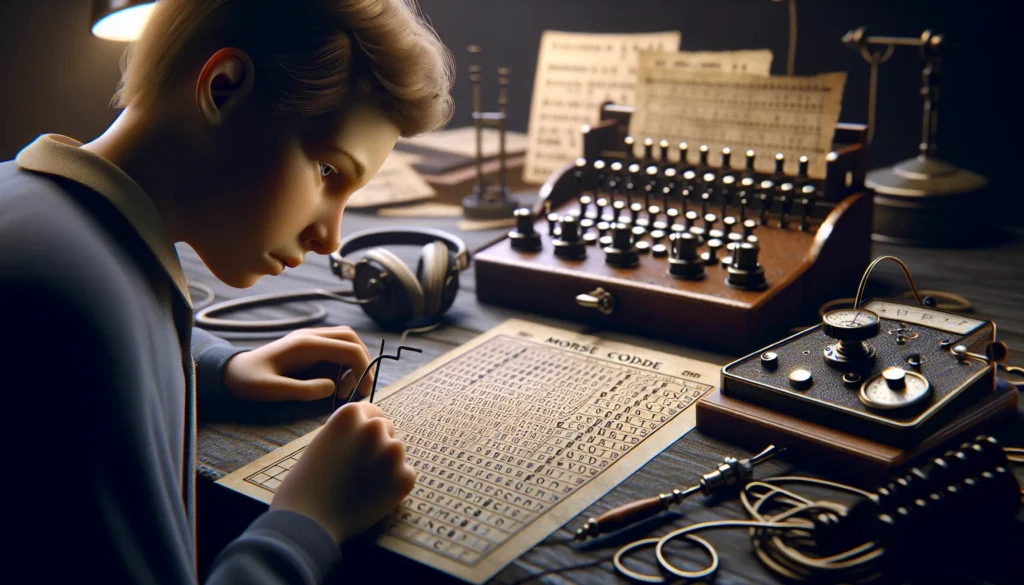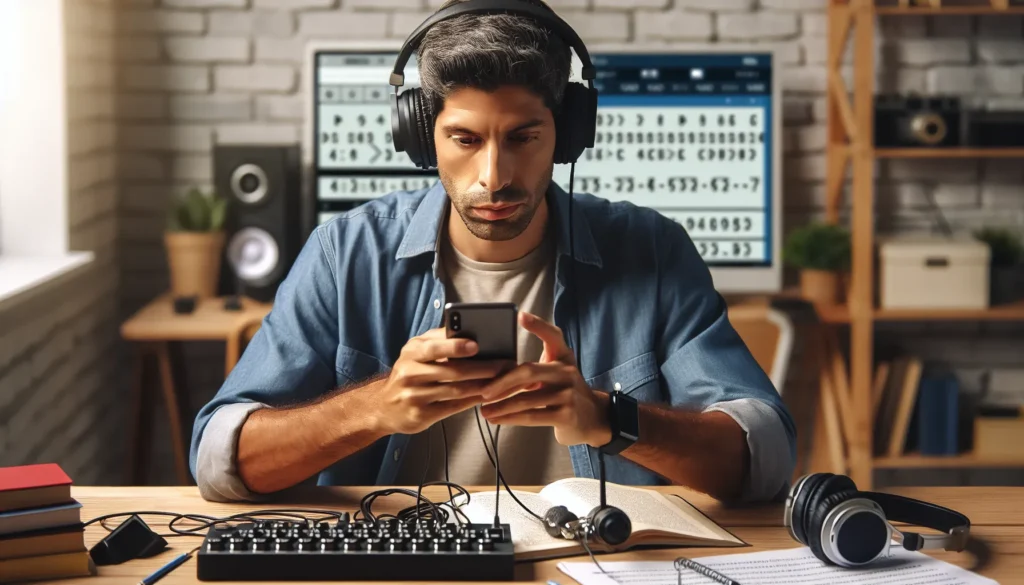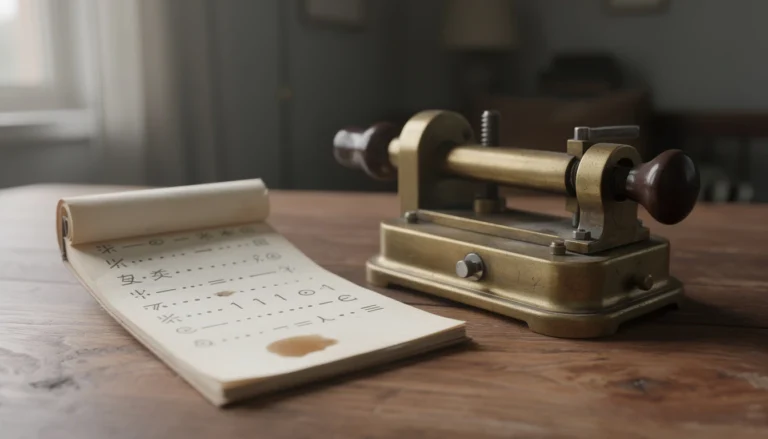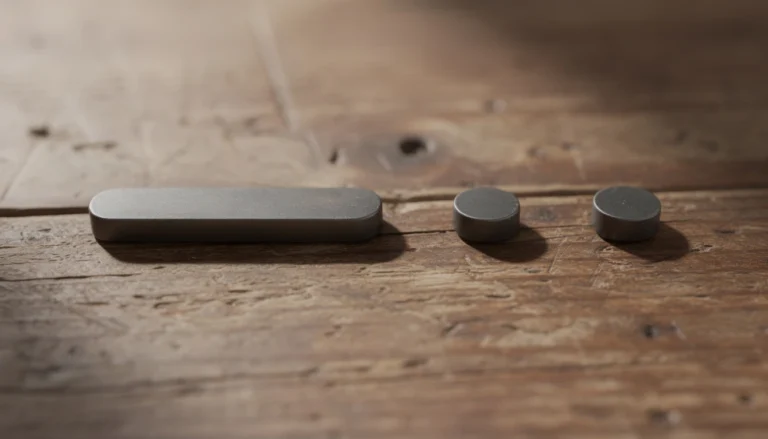Key Takeaways
- Morse code uses dots and dashes with strict timing (1-unit dot, 3-unit dash; gaps: 1 within letters, 3 between letters, 7 between words) to encode A–Z, 0–9, and prosigns.
- Learn fast by training character shapes at 20–25 WPM with Farnsworth spacing (10–15 WPM effective) and the Koch method; aim for 90% accuracy before increasing speed.
- Practice with a 600–800 Hz tone, steady rhythm, and short daily drills; use apps like LCWO, Morse-It, or Koch Trainer to track WPM and accuracy.
- Send and receive via sound, light, or taps (flashlights, beeps, knocks) and keep spacing clean; know core patterns like SOS (… — …) and common prosigns (AR, SK, K, KN).
- Apply Morse code for emergency signaling, amateur radio, and accessibility, following legal and safety guidelines (proper bands, eye-safe light, sensible audio levels).
I love simple ways to send messages when voice or text fails. Morse code is a tiny toolkit of dots and dashes you can tap flash or beep anywhere. With a flashlight wall knocks or a phone app I can talk across distance without a signal.
In this guide I’ll show basics. How the alphabet maps to short and long signals. How to time the gaps. How to practice with easy words and rhythm tricks. You don’t need gear. Just a steady beat and a little patience. By the end you’ll tap out your name and read it back with ease.
What Is Morse Code?
Morse code is a two-symbol communication system that encodes characters as dots and dashes per an international telecommunication standard (ITU-R M.1677-2, 2019).
Morse code began with Samuel F. B. Morse and Alfred Vail in the 1830s and reached wide use with the 1844 telegraph line between Washington and Baltimore (Encyclopaedia Britannica).
Core signals and timing
| Element | Symbol | Duration (time units) | Source |
|---|---|---|---|
| Dot | . | 1 | ITU-R M.1677-2 |
| Dash | − | 3 | ITU-R M.1677-2 |
| Gap within a letter | (between dots dashes) | 1 | ITU-R M.1677-2 |
| Gap between letters | (between characters) | 3 | ITU-R M.1677-2 |
| Gap between words | (between words) | 7 | ITU-R M.1677-2 |
Key facts for how to do Morse code
- System: I send information with only two signal lengths and I keep strict timing for clarity (ITU-R M.1677-2).
- Alphabet: I encode A–Z, 0–9, and punctuation like period question mark slash and plus, and I use prosigns like AR and SK for procedural control (ARRL Handbook).
- Mediums: I do Morse code by sound light radio or touch, for example audio beeps flashlight blinks CW radio tones and phone vibration patterns (FCC Public Safety Bureau).
- Structure: I map each character to a fixed pattern, for example A is .− N is −. S is … and 0 is −−−−− (ITU-R M.1677-2).
- Rate: I pace my sending in words per minute and I keep the unit length consistent for copy accuracy, for example 15 WPM with Farnsworth spacing for beginners (ARRL).
Why it matters when I do Morse code
- Reliability: I pass messages through noise with narrow bandwidth signals and simple gear in austere conditions, for example low power CW on HF bands during outages (ARRL Emergency Communications).
- Accessibility: I communicate across language barriers since patterns are unambiguous and I can teach them with short drills and fixed timing cues (Britannica).
- ITU-R M.1677-2 International Morse code 2019 https://www.itu.int/rec/R-REC-M.1677-2-201910-I
- Encyclopaedia Britannica Morse Code https://www.britannica.com/topic/Morse-Code
- ARRL The ARRL Handbook for Radio Communications https://home.arrl.org/action/Store/Product-Details/productId/2003370423
- FCC Public Safety and Homeland Security Bureau CW and Narrowband Communications overview https://www.fcc.gov/public-safety-and-homeland-security-bureau
The Morse Code Alphabet And Numbers

I map each letter and digit to dots and dashes to do Morse code fast. I keep the chart handy when I practice.
| Character | Code |
|---|---|
| A | .- |
| B | -… |
| C | -.-. |
| D | -.. |
| E | . |
| F | ..-. |
| G | –. |
| H | …. |
| I | .. |
| J | .— |
| K | -.- |
| L | .-.. |
| M | — |
| N | -. |
| O | — |
| P | .–. |
| Q | –.- |
| R | .-. |
| S | … |
| T | – |
| U | ..- |
| V | …- |
| W | .– |
| X | -..- |
| Y | -.– |
| Z | –.. |
| 0 | —– |
| 1 | .—- |
| 2 | ..— |
| 3 | …– |
| 4 | ….- |
| 5 | ….. |
| 6 | -…. |
| 7 | –… |
| 8 | —.. |
| 9 | —-. |
Dots, Dashes, And Spacing Rules
I define the core marks and gaps to match the alphabet and numbers.
- Dot: Send a short mark for one unit for letters like E and I.
- Dash: Send a long mark for three units for letters like T and M.
- Intra character gap: Leave one unit between marks inside a letter like A or C.
- Inter letter gap: Leave three units between letters like S and O.
- Word gap: Leave seven units between words like SOS and HELP.
Timing Basics: Units, Gaps, And Rhythm
I treat time as units so I keep a steady code rhythm.
| Element | Length in units |
|---|---|
| Dot | 1 |
| Dash | 3 |
| Gap between marks in a letter | 1 |
| Gap between letters | 3 |
| Gap between words | 7 |
- Set pace: Pick a dot length you can repeat for minutes like 60 ms or 120 ms.
- Keep ratio: Hold 1 to 3 to 7 timing across marks and gaps for clean copy.
- Train ears: Tap patterns for common letters like E T A N and count units out loud.
- Chunk words: Group letters into sound blocks like CQ or 73 to do Morse code faster.
Tools You Need To Learn Morse Code

I stack simple tools to do Morse code cleanly. I match audio tone and speed to the standard, then I practice with focused apps.
Audio Tone, Speed (WPM), And Practice Apps
- Pick a steady sine tone between 600 Hz and 800 Hz for clear do Morse code sound in most headphones and speakers.
- Set character speed at 20 WPM or faster with Farnsworth spacing at 10 to 15 WPM to build instant recognition without guessing.
- Train with short high contrast sessions of 10 minutes using randomized letters and common words like SOS and TEST.
- Track progress by logging copy accuracy by session date and by WPM for consistent gains.
- Use apps on web and mobile for flexible practice, like LCWO.net, Morse-It, Morse Trainer, Koch Trainer, and Morse Keys.
| Parameter | Value | Context | Source |
|---|---|---|---|
| Tone frequency | 600 to 800 Hz | Comfortable pitch range for do Morse code audio | ARRL Operating Manual 2023 |
| Dot duration | 1 unit | Base timing unit for do Morse code | ITU-R M.1677-1 |
| Dash duration | 3 units | Standard dash length ratio 1:3 | ITU-R M.1677-1 |
| Intra-character gap | 1 unit | Space between dots and dashes within a letter | ITU-R M.1677-1 |
| Inter-letter gap | 3 units | Space between letters | ITU-R M.1677-1 |
| Inter-word gap | 7 units | Space between words | ITU-R M.1677-1 |
| Character speed | 20 to 25 WPM | Faster characters with Farnsworth spacing for learning | ARRL |
| Effective speed | 10 to 15 WPM | Extended spacing for beginners | ARRL |
- Start with Koch method order, then expand sets after consistent 90 percent copy.
- Switch media between audio and light to strengthen do Morse code timing across senses.
- Export practice logs as CSV, then compare sessions by date and by character set size for objective feedback.
Step-By-Step: How To Do Morse Code

I keep the pace steady and the gaps clean. I build accuracy first, speed second.
Learn The Timing Using SOS (… — …)
I use standard timing from the ITU radio regulation for Morse code rhythm (Source: ITU-R M.1677-1).
| Element | Duration in dot units |
|---|---|
| Dot | 1 |
| Dash | 3 |
| Gap between elements within a letter | 1 |
| Gap between letters | 3 |
| Gap between words | 7 |
- Set a tone at 600 Hz to 800 Hz for clear clicks (Source: ARRL).
- Tap SOS as … — … with exact gaps.
- Tap three dots with equal spacing.
- Hold three dashes each at triple dot length.
- Pause three dot units between S and O and O and S.
- Repeat until timing feels automatic.
Practice With Common Letters And Words
I drill high frequency letters first, then I chain them into words (Source: ITU-R M.1677-1, ARRL).
- Start with E . and T – as single element anchors.
- Add A .- and N -. as two element pairs.
- Add I .. and M — as mirror pairs.
- Add O — and S … as length contrasts.
- Read and send words like TEST -,.,.,-, SOS …—…, ANA .- – .-, MOM — — –.
- Count correct copies out of 20 items per run for accuracy tracking.
Encode And Decode Simple Messages
I translate text to signals using the chart, then I decode by pattern recognition.
- Pick a short message like HI . . .. or ME — ..
- Map each letter to dots and dashes using the standard table (Source: ITU-R M.1677-1).
- Set inter letter gaps at 3 dot units and word gaps at 7 dot units.
- Send with a metronome at 20 WPM character speed with Farnsworth spacing if recognition lags (Source: ARRL).
- Copy incoming code by writing dots dashes slashes for gaps, then convert to letters.
- Check copies against plain text, then log errors by character and position.
Sending Methods And Etiquette
I send Morse code cleanly when I match the medium to the moment. I keep etiquette simple so copy stays easy for anyone listening.
Tapping, Flashing, And Sounding
- Send clear elements with firm starts and stops. I shape dots and dashes with crisp edges on keys, lights, or tones for best copy.
- Keep a steady rhythm that tracks ITU timing. I keep a dot as 1 unit, a dash as 3 units, intra character gaps as 1 unit, inter letter gaps as 3 units, and word gaps as 7 units per ITU‑R M.1677‑1 (https://www.itu.int/rec/R-REC-M.1677-1-200910-I).
- Match the method to conditions. I tap on tables or metal rails if noise blocks audio, I flash lights in line of sight if sound leaks privacy, I sound a tone on radios or apps if range matters.
- Use simple gear for practice. I use straight keys, paddles, and touch pads for tapping, I use LED flashlights and phone flash for flashing, I use 600 to 800 Hz tones on practice apps and radios for sounding as ARRL training materials suggest for comfortable copy (https://www.arrl.org/learning).
- Hold spacing under stress. I slow slightly in QRM or QRN so inter letter and word gaps remain accurate if copying falls off.
Table: Practical sending targets
| Parameter | Target | Context |
|---|---|---|
| Tone pitch | 600–800 Hz | Clear audio copy for most operators |
| Character speed | 20 WPM | Build instant recognition with Farnsworth spacing |
| Effective speed | 10–15 WPM | Comfortable practice copy speed |
| Word gap | 7 dot units | ITU‑R M.1677‑1 standard spacing |
| Distress pattern | SOS (··· ——— ···) | International signal per ITU conventions |
Prosigns And Abbreviations
I use standard procedural signs and shortforms so exchanges stay fast and unambiguous.
- Use prosigns as single run‑together signals. I send AR for end of message, I send SK for final sign off, I send KN for go only to named station, I send K for go anyone, I send BT for break, I send AS for wait. Prosigns come from ITU‑R M.1677‑1 and common amateur practice documented by ARRL (https://www.itu.int/rec/R-REC-M.1677-1-200910-I, https://www.arrl.org/files/file/On-the-Air/How%20to%20Learn%20Morse%20Code.pdf).
- Keep abbreviations predictable. I send CQ to call any station, I send QTH for my location, I send QRS to slow down, I send QRQ to speed up, I send QRM for interference, I send QRN for static, I send QRL to ask if the frequency is in use, I send QSL to confirm receipt, I send 73 for best regards, I send 88 for love and kisses. These follow long standing amateur usage per ARRL Operating resources (https://www.arrl.org/operating-basics).
- Format calls cleanly. I send CQ CQ CQ DE MYCALL K to invite replies, I send YOURCALL DE MYCALL KN to hand the turn, I send R R R plus report to acknowledge.
- Confirm content explicitly. I send R for roger, I send ? for query, I send BK to break in, I send NIL if nothing heard, I send AS if I pause.
- Keep etiquette consistent. I avoid sending over others, I ask QRL before calling, I keep exchanges brief in crowded bands, I repeat key data like callsigns and numbers twice if QSB increases.
Practice Plans And Tips For Progress
I build speed and accuracy with short focused sessions. I keep the tone clean and the timing exact per ITU spacing for consistent copy.
Daily Drills And Copy Practice
I follow a compact plan that trains instant recognition and steady sending.
| Block | Minutes | Mode | Target | Metric |
|---|---|---|---|---|
| Warm up | 3 | Audio tone 700 Hz | Alphabet sweep | 95% clean |
| Copy 1 | 5 | Random letters at 20 WPM Farnsworth 8–12 WPM | Head copy only | 90% right |
| Copy 2 | 5 | Common words at 20 WPM Farnsworth 10 WPM | Word chunks | 90% right |
| Send 1 | 4 | Key or tap per ITU timing | Even spacing | Zero extra dits |
| Copy 3 | 5 | Mixed letters numbers punctuations | Instant ID | 85% right |
| Send 2 | 3 | Prosigns and abbreviations | Clear merges | No breaks |
| Review | 2 | Log errors | Top 3 fixes | Mark trend |
- Set the tone at 600–800 Hz for clean side tone per ARRL guidance, pick one pitch and keep it stable
- Set character speed at 20–25 WPM with longer Farnsworth gaps, train symbol shapes not counting
- Copy by ear not by pen for the first pass, jot only missed items on a second pass
- Switch media between audio light and touch every other day, lock timing across channels
- Drill high frequency letters like E T A I N O S H R for 2 minutes, then add K M W U D
- Mix numbers in short bursts like 30 seconds, anchor 5 0 1 first
- Use spaced repetition decks for hard groups like B 6 Q C, re-test within 24 hours
- Track accuracy per block, raise effective speed by 1 WPM when accuracy holds for 3 sessions
- Read ITU-R M.1677-1 timing notes weekly, refresh gap ratios for dots dashes and spaces
Sources: ITU-R M.1677-1 International Morse code, ARRL Morse resources
Avoiding Common Mistakes
I remove friction by targeting the errors that stall progress.
- Stop counting dits and dahs, hear each character as a single rhythm unit
- Stop slowing the character speed, keep 20 WPM characters and stretch only the gaps
- Stop uneven spacing, keep dot 1 unit dash 3 units intra-character gap 1 unit inter-letter 3 units word gap 7 units per ITU
- Stop visual decoding, close eyes for copy blocks and force audio images
- Start with accuracy goals, raise speed only after 90% copy holds for three blocks
- Start clean sending before speed, keep dashes flat and full not clipped
- Start head copy early, skip writing every character and write only keywords
- Check oscillator pitch drift, keep one stable tone to strengthen pattern memory
- Check posture and key angle, keep wrist neutral to prevent key bounce
- Check practice length, keep sessions under 25 minutes to avoid fatigue effects
Real-World Uses And Safety Considerations
Real-world uses and safety considerations guide how I do Morse code outside practice.
Everyday and field uses
- Use amateur radio for reliable copy in weak signals, like QRP contacts and DX beacons, per ITU Morse code timing and IARU operating practice.
- Use emergency signaling for line of sight alerts, like SOS with a flashlight or whistle, per ITU and mountain rescue guidance.
- Use identifiers in transport systems, like aviation NDB idents and VOR idents that repeat station letters in Morse, per FAA Aeronautical Information Manual.
- Use assistive communication for low speech scenarios, like eye blinks or finger taps in hospitals, per clinical AAC practice notes.
- Use education projects for STEM labs, like microcontroller blinkers and tone oscillators, per IEEE learning modules.
- Use covert messaging in noisy sites, like tap code on pipes and hulls, with explicit consent and legal compliance.
Distress and signaling protocols
- Send SOS as three short, three long, three short, like … — …, per ITU‑R M.1677‑1.
- Send mountain distress as six signals per minute then pause one minute, like 6 flashes or 6 blasts, per UIAA and Alpine clubs.
- Send acknowledgement as three signals per minute, like 3 flashes or 3 blasts, per UIAA.
- Send radio distress voice as MAYDAY on the local emergency channel, like 121.5 MHz aeronautical and VHF Ch 16 maritime, per FAA and USCG.
- Send content concise, then give location, nature of emergency, people count, and callback, per USCG and SAR checklists.
| Protocol or channel | Pattern or value | Medium | Notes | Source |
|---|---|---|---|---|
| SOS | … — … | Light, sound, radio CW | Universal distress prosign | ITU‑R M.1677‑1 |
| Alpine distress | 6 per minute then 1 minute pause | Light, sound | Response is 3 per minute | UIAA |
| Aeronautical guard | 121.5 MHz | Voice, ELT | International emergency frequency | FAA AIM |
| Maritime guard | 156.8 MHz Ch 16 | Voice, DSC watch | Hailing and distress | USCG, IMO |
| Effective CW speed | 12 to 20 WPM | Radio CW | Readable in poor SNR | IARU ops guides |
Legal and ethical safety
- Follow radio regulations, then choose bands and power, per FCC Part 97 in the US and ITU Radio Regulations worldwide.
- Follow local emergency use limits, then transmit distress only for real danger, per FCC and USCG rules.
- Follow privacy norms, then avoid sending personal data without consent, per data protection principles.
- Follow site policies, then get permission before signaling in parks, ports, and airports, per land managers and port authorities.
- Follow interference controls, then avoid dazzling drivers, pilots, and mariners with bright lights, per FAA and COLREGs guidance.
Operational safety tips
- Keep light output eye safe, then use Class 2 or Class 3R pointers under 5 mW for handheld signaling, per FDA laser guidance.
- Keep audio under 85 dBA at the ear, then wear hearing protection for louder tones, per NIOSH exposure limits.
- Keep flash rates outside 3 to 30 Hz, then avoid photosensitive seizure risk in public spaces, per Epilepsy Foundation.
- Keep batteries warm and dry, then pack spares in sealed bags, per outdoor safety practice.
- Keep signals clear and short, then repeat location every 1 to 2 minutes until acknowledged, per SAR best practice.
Context notes on maritime and aviation Morse
- Use Morse for station idents in aviation, then verify the letters match the chart before navigation, per FAA AIM.
- Use SOS recognition in maritime, then prefer GMDSS and DSC for initiating distress since 1999, per IMO SOLAS updates.
- Use CW on amateur bands for practice, then avoid prohibited frequencies like 121.5 MHz and 156.8 MHz outside emergencies, per FCC and USCG.
Sources: ITU‑R M.1677‑1, ITU Radio Regulations, FCC Part 97, FAA Aeronautical Information Manual, USCG Navigation and Communications guidance, IMO SOLAS and GMDSS circulars, UIAA Mountain Rescue Handbook, IARU Operating Practice, NIOSH Noise Criteria, FDA Laser Pointer Safety, Epilepsy Foundation Photosensitivity.
Conclusion
You now have a practical path to follow. Keep it light. Keep it fun. Let curiosity lead and let mistakes teach. Progress shows up when you keep showing up.
I hope this guide helps you build a skill that feels both classic and useful. Set a tiny goal for your next session and celebrate when you hit it. Share what you learn with a friend or teach someone a simple message. Teaching locks it in.
If you get stuck I’m here to help. Drop your questions and wins. I’d love to hear how your practice goes and what you discover along the way. Stay patient stay kind to yourself and keep tapping forward.
Frequently Asked Questions
What is Morse code and how does it work?
Morse code is a two-symbol system that encodes letters and numbers as dots (short) and dashes (long). It relies on precise timing: short gaps between parts of a letter, longer gaps between letters, and the longest gaps between words. You can send Morse by sound, light, or touch, making it reliable when voice or text isn’t possible.
Why is Morse code still useful today?
Morse code cuts through noise, works with minimal gear, and transcends language barriers. It’s used in amateur radio, emergencies (SOS), low-bandwidth links, and identifiers in aviation and maritime systems. It’s also a practical backup when power, signal, or voice communication is limited.
Do I need special equipment to learn Morse code?
No. You can practice with a metronome, a steady tone from your phone or computer, a flashlight, or finger taps. For best results, use a clear sine tone around 600–800 Hz and a practice app that supports Farnsworth spacing and progress tracking.
What are the basic timing rules in Morse code?
- Dot length: 1 unit
- Dash length: 3 units
- Intra-character gap (between dots/dashes): 1 unit
- Gap between letters: 3 units
- Gap between words: 7 units
Keeping a steady rhythm is essential for readability and accuracy.
How fast should I practice Morse code?
Start with character speed at 20 WPM or faster using Farnsworth spacing to slow overall rate while training instant recognition. Aim for 90–95% accuracy before increasing speed. Gradually reduce spacing to raise effective speed as your copying improves.
What is Farnsworth spacing and why use it?
Farnsworth spacing keeps characters fast (e.g., 20 WPM) but adds extra space between letters and words, lowering the effective speed. This prevents counting dits and dahs, builds sound-pattern recognition, and accelerates progress without overwhelming beginners.
How can I learn the Morse code alphabet quickly?
Use a reference chart and practice high-frequency letters first (E, T, A, N, I, M, S, O). Tap short words, your name, and common abbreviations. Chunk letters into rhythm patterns instead of counting. Mix sending and copying daily for 10–15 minutes.
What apps or tools help with practice?
Look for apps that offer Koch or Farnsworth methods, custom character sets, tone selection (600–800 Hz), speed control, and accuracy logging. Many ham radio trainers, web generators, and mobile apps provide drills, word lists, and exportable progress reports.
What is the correct way to send SOS in Morse code?
SOS is three dots, three dashes, three dots without letter gaps: …—… Send it clearly at steady timing, then repeat. Use any medium available—sound, light, or tapping. Follow local emergency protocols and only transmit distress signals in real emergencies.
What are prosigns and why use them?
Prosigns are procedural signals sent as one continuous character to manage traffic efficiently. Common examples include:
- AR (end of message)
- SK (end of contact)
- BT (new paragraph/section)
They speed up exchanges and reduce confusion, especially in crowded bands.
How do I avoid common beginner mistakes?
Don’t count dits and dahs or decode visually. Keep tone and rhythm steady, prioritize accuracy over speed, and maintain correct spacing. Practice short sessions, rest often, and log errors to target weak characters. Send cleanly; avoid embellishing timing.
Can Morse code be sent with light or touch?
Yes. Flashlights, LEDs, and reflective signals work well for line-of-sight. For touch, use taps or vibrations. Maintain the same timing rules. In noisy environments or at a distance, light and touch can outperform sound for clarity and reliability.
What are safe and legal considerations for Morse code use?
Follow national regulations, especially on radio frequencies. Obtain licenses where required. Use distress signals only for real emergencies. Avoid blinding lights, hazardous locations, or distracting signals near roads or airports. Get permission when signaling on shared property or bands.
How should I structure a clean Morse exchange?
Call clearly, identify both parties, confirm content, and keep messages brief. Use standard abbreviations and prosigns, maintain steady timing, avoid interruptions, and repeat key information. In crowded conditions, slow slightly and prioritize clarity over speed.
What’s an effective daily practice plan?
- Warm-up (2–3 min): tone, rhythm, common letters
- Copy practice (5–7 min): words/calls at 20 WPM characters, Farnsworth spacing
- Send practice (5–7 min): names, short messages
Track accuracy, adjust spacing as you hit 95%, and alternate audio and light sessions to strengthen timing.



